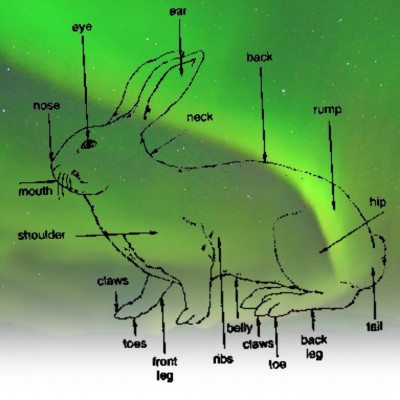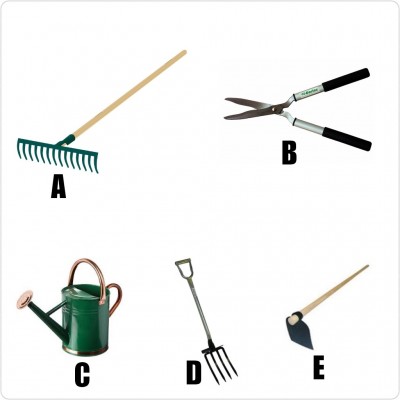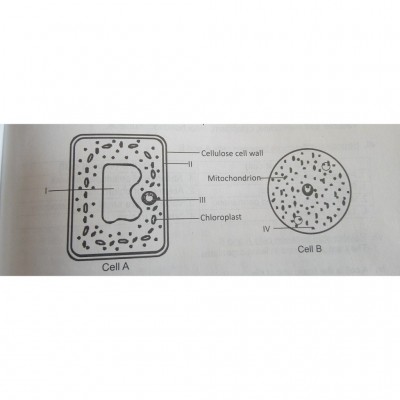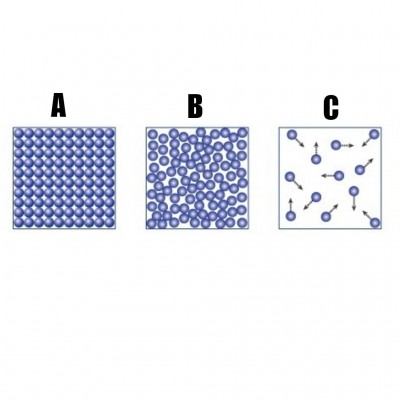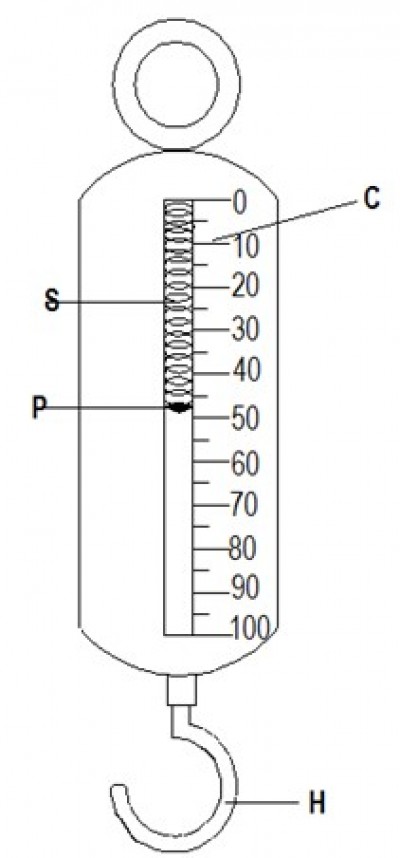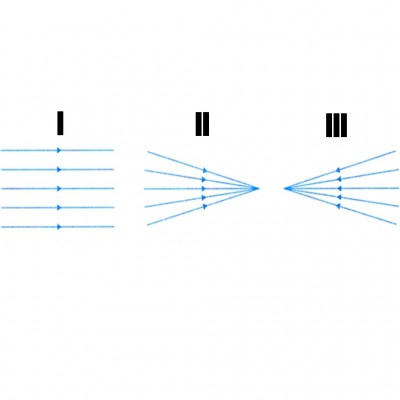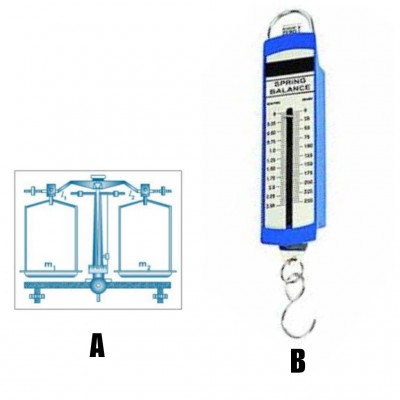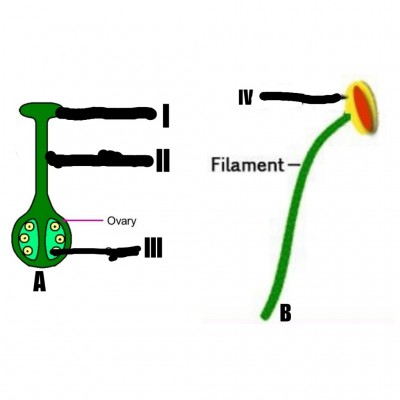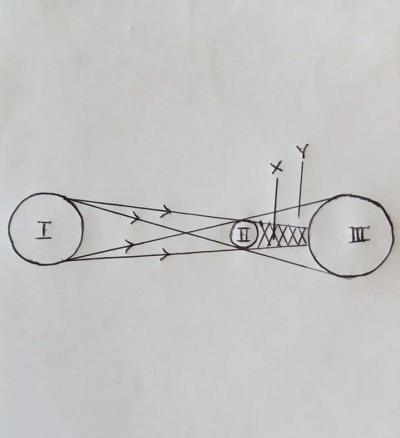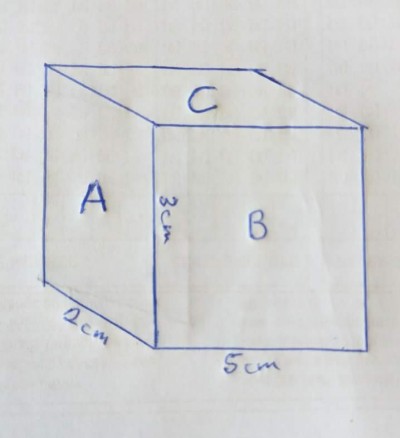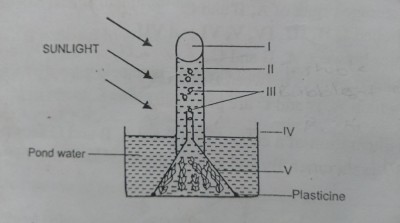SCIENCE PRACTICALS
TOPIC: ECOSYSTEM
Study the organism and answer the questions that follow :
a) Give the name of the organism illustrated.
ans: Rabbit 🐰
b) Construct a food chain and include the organism you have named in (a) above.
ans: Grass------>Rabbit------>Man
c) State the habitat of the organism.
ans: Land
d) State the feature that enables the organism to: I. breathe
II. feed
III. escape from predators
ans: I-Lungs
II-Chisel-like teeth
III-Limbs or long ears
e) State two examples of organisms whose feeding habit is the same as that of the organism.
ans: Goat, sheep, cattle, horse, etc
f) What feature enables the organism to keep its body warm?
ans: The hairy skin
#READY_4_EXAMS
TOPIC: VEGETABLE PRODUCTION
The illustrations are farm tools. Use them to answer the questions below:
a) Name each of the tools labelled A to E.
ANS: A-Rake
B-Shears
C-Watering can
D-Garden fork
E-Hoe
b) State the use of each of the tools named in above.
ANS: A-Levelling and gathering rubbish
B-Cutting and trimming of hedges
C-For watering crops
D-Turning compost heap and digging soil during seed bed preparation.
E-Weeding and making mounds
The diagrams A and B illustrated represent cells of two living organisms. Study them carefully and answer the questions below:
a) Identify cells A and B with reasons.
ANS: A-Plant cell because it has a cell wall.
B-Animal cell because it has no cell wall.
b) Name each of the parts labelled I, II, III and IV.
ANS: I-Vacuole
II-Cell membrane
III-Nucleus
IV-Cytoplasm
c) What is the role of the cellulose cell wall to cell A?
ANS: it provides strength and support to the cell.
d) State one function of the parts labelled III and IV.
ANS: III-It controls all life activities of the cell.
IV-It controls movement of substances in and out of the cell.
The diagrams A, B and C represent the arrangement of particles in the three states of matter.
a) Identify each of the states of matter labelled A, B and C.
ANS: A-Solid
B-Liquid
C-Gas
b) State three examples each of A, B and C.
ANS: A-Wood, stone, book, sand, human.
B-Water, petrol, kerosene, milk, oil.
C-Carbon dioxide, oxygen, LPG, hydrogen.
c) Which of the states can flow?
ANS: B and C
d) Which of the states take the shape of its container?
ANS: B
e) State one difference between A and B.
ANS: A has a fixed shape while B has no fixed shape.
The diagram shown illustrates a measuring instrument. Study it carefully and answer the questions below:
a) Identify the measuring instrument.
ANS: Spring balance or force meter
b) Name the parts labelled C, S, P and H.
ANS: C-Calibrations
S-Scale
P-Pointer
H-Hook
c) What physical quantity is measured by the instrument?
ANS: Weight
d) State the S. I unit of the physical quantity named in (c) above.
ANS: Newton
The diagrams shows beams of light. Use them to answer the questions below:
a) Identify the beams of light labelled I, II and III.
ANS: I-Parallel beam
II-Convergent beam
III-Divergent beam
b) Name one example each beams I and III.
ANS: I-Light ray from the sun
III-Headlamp of a car
c) What is a beam of light?
A beam of light is a collection of light rays traveling together.
The table illustrated shows a programme involving four crops. Use it to answer the questions below:
a) What does the table represent?
ANS: A four-year crop rotation programme.
b) Identify the crops labelled A, B, C, D and E.
ANS: A-BEAN
B-CARROT
C-CABBAGE
D-BEAN
E-CABBAGE
c) State two importance of the inclusion of bean in the programme.
ANS: 1. It improves soil fertility.
2. They break pest cycle.
3. They control soil erosion.
d) State one principle of the programme illustrated.
ANS: 1. Crops of the same family must not follow each other.
2. Deep rooted crops should be followed by crops with shallow roots.
3. There should be inclusion of a legume.
e) State two advantages of the programme above.
ANS: 1. Nutrients are efficiently used.
2. Soil fertility is maintained.
3. It controls soil erosion.
4. There is reduction in labour use.
The diagrams represent two measuring instruments A and B. Study them carefully and answer the questions below:
a) Identify the measuring instruments labelled A and B.
ANS: A-CHEMICAL BALANCE
B-SPRING BALANCE
b) State the use of each of the measuring instruments A and B.
ANS: A-Used for measuring the mass of objects.
B-Used for measuring weight of objects.
c) Name three other instruments that measure the same physical quantity as A.
ANS: Beam balance, electronic balance, lever balance.
d) Name the S. I unit associated with the measuring instruments A and B.
ANS: A-Kilogram(Kg)
B-Newton(N)
Study the diagrams carefully and answer the questions below:
a) Identity the structures labelled A and B.
ANS: A-PISTIL/CARPEL
B-STAMEN
b) Name each of the parts labelled I, II, III and IV.
ANS: I-STIGMA
II-STYLE
III-OVULE
IV-ANTHER
c) State one function of the parts labelled II and III.
ANS: II-It supports the stigma.
III-It contains the female sex cells
d) What is the term given to the:
(I) transfer of the content of IV onto I.
(II) union between the content of I
and III.
ANS: (I) Pollination
(II) Fertilization
The figure represents the beginning of an experiment to investigate a certain phenomena in a living tissue.
a) State the aim of the set-up.
ANS: To demonstrate osmosis in a living tissue.
b) Explain the principle involved in the process.
ANS: Water moves across the living yam tissue by osmosis into the strong sugar solution. The movement of water continues until equilibrium is reached.
c) What does the yam cup represents?
ANS: A semi-permeable membrane.
d) Name a living tissue which could have been used for the illustration.
ANS: Yam, cocoyam, cassava, potato.
e) What would happen if the living yam was placed in boiling water for the illustration?
ANS: Boiling will kill the cells of the yam, making it impermeable.
f) How would you set-up a control of the experiment above?
ANS: By filling both the trough and living yam with water.
g) State the observation that would be made after 24 hours.
ANS: The level of sugar solution rises while water level in trough reduces in level.
The illustration shows an eclipse. Study it carefully and answer the questions below :
a) What type of eclipse is shown by the diagram??
ANS: SOLAR ECLIPSE
b) Name the parts labelled I, II and III.
ANS: I-SUN
II-MOON
III-EARTH
c) Name the types of shadows formed by regions X and Y.
ANS: X-UMBRA
Y-PENUMBRA
d) When does the eclipse illustrated occur?
ANS: DURING THE DAY
e) Name the two movements that results in eclipses.
ANS: REVOLUTION AND ROTATION
f) What does the arrows in the diagram represent?
ANS: IT SHOWS THE DIRECTION OF LIGHT RAYS FROM THE SUN.
The diagram is an illustration of a cuboid. Study it carefully and answer the questions below.
a) Determine the area of each of the faces A, B and C.
ANS: Area of A = 3*2=6cm2
Area of B = 5*3=15cm2
Area of C = 5*3=15cm2
b) If the weight of the cuboid is 100N, determine the pressure exerted by the cuboid in Ncm2 when it lies on:
(I) Face A. (II) Face B
ANS: Pressure =Force/Area
(I) Face A = 100/6
= 16.67Ncm2
(II) Face B = 100/15
= 6.67Ncm2
c) Name the instrument used to measure the weight of the cuboid.
ANS: Spring balance
In an experiment to investigate the process of photosynthesis in an aquatic plant, the set-up below was used. The set-up was placed in sunlight for two hours.
a) Name the parts labelled II, III, IV and V.
ANS: II-TEST TUBE.
III-BUBBLES OF AIR
IV-BEAKER/WATER TROUGH
V-FUNNEL
b) Name the substance that occupies the part labelled I.
ANS: OXYGEN
c) Why is pond water preferred to tap water in this experiment?
ANS: Tap water contains chemicals like chlorine which might be injurious to the plant.
d) Why was the set-up exposed to sunlight?
ANS: Sunlight is necessary for photosynthesis.
e) Suggest an aim for the experiment.
ANS: To show that oxygen is produced or released during photosynthesis.
